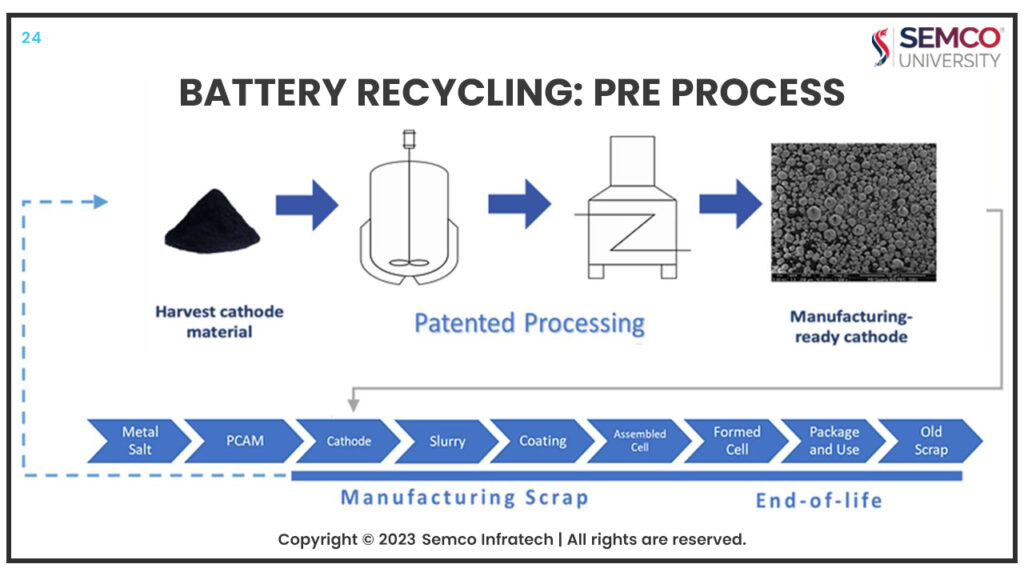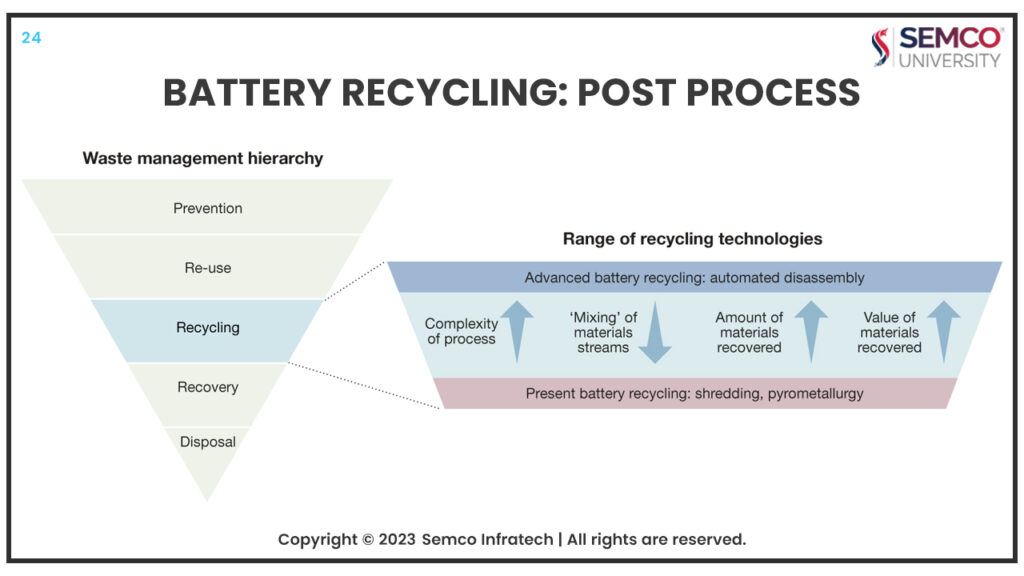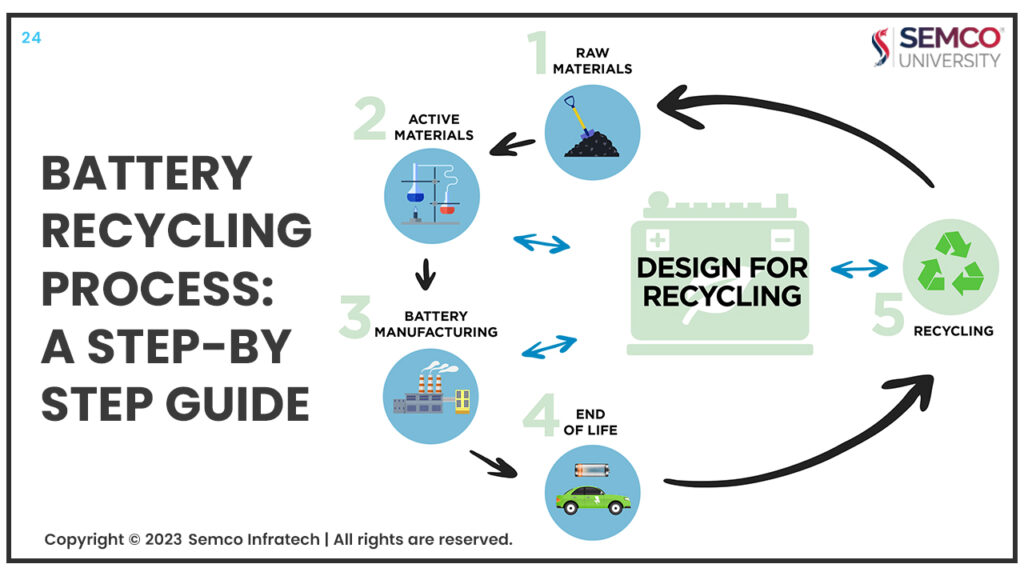Battery recycling process is a necessity and batteries play an important role in modern society, powering everything from cell phones and laptops to electric vehicles and renewable energy storage systems. However, as batteries reach the end of their useful life, they can become a source of environmental concern, with the potential to release toxic chemicals and heavy metals into the environment. Recycling batteries is a way to mitigate these concerns, as it allows valuable materials to be reused, reducing the need for new materials to be mined or manufactured. In this article, we will discuss the recycling process of batteries.
Battery Recycling Process
Battery recycling is the process of recovering valuable materials from used batteries for reuse. The process typically involves crushing the batteries into small pieces and then separating the different materials, such as metals and plastics, through a variety of physical and chemical processes. These materials can then be used to make new batteries or other products. It is important to recycle batteries to prevent environmental pollution and to conserve natural resources. Below down is a detailed step-by-step guide to explore the battery recycling process.

Collection
The first step in the recycling process is collection. Batteries can be collected from a variety of sources, including recycling centers, landfills, and battery retailers. Many cities and towns have battery recycling programs in place, where residents can drop off their old batteries for recycling.
Sorting
Once batteries have been collected, they are sorted into different categories based on their chemistry and size. The most common types of batteries are lead-acid, lithium-ion, and nickel-cadmium batteries, and each type requires a different recycling process.
Pre-Processing
After sorting, batteries undergo a pre-processing step where they are prepared for recycling. This can involve draining any remaining electrolyte from the battery, removing the plastic casing, and separating any metal components.

Smelting
The next step in the recycling process is smelting, which is used to recover valuable metals from the battery. The smelting process involves melting down the metal components of the battery, such as the lead plates in a lead-acid battery, to separate the metal from any impurities. The metal is then purified and can be sold to manufacturers to be used in the production of new batteries or other products.
Chemical Processing
In addition to smelting, chemical processing is also used to recover valuable materials from batteries. This process is particularly important for lithium-ion batteries, which contain a variety of valuable metals such as lithium, cobalt, and nickel.
The chemical processing of lithium-ion batteries typically involves shredding the battery to separate the metal foils from the electrolyte solution and plastic casing. The metal foils are then processed using a combination of mechanical and chemical techniques to recover the valuable metals.
The major Battery Recycling Process Is “Disposal”
After the valuable materials have been recovered from the battery, any remaining material is disposed of in an environmentally responsible manner. This can involve sending the material to a landfill or incinerator or treating it with chemicals to neutralize any toxic components.
Conclusion
Recycling batteries is an important way to reduce the environmental impact of these important components of modern life. The recycling process involves collection, sorting, pre-processing, smelting, chemical processing, and disposal. By recycling batteries, we can reduce the need for new materials to be mined or manufactured, reducing the environmental impact of battery production and disposal.
More Articles:
liquid leakage analysis of soft-pack lithium,
what are the functions of the battery pack,
Failure analysis of lithium batteries is a science,
Overview of Lithium Batteries,
The packaging form of lithium-ion battery is better,
Causes Reconditioning Of Battery Vulcanization,
Lithium-ion Battery Process Details,
Lithium battery overcharge mechanism and anti-overcharge measures.,
Factors Affecting The Performance of High Power Lithium-ion Batteries,
Electrical measurement of lithium-ion batteries,
Functions of the Battery management system (BMS),

